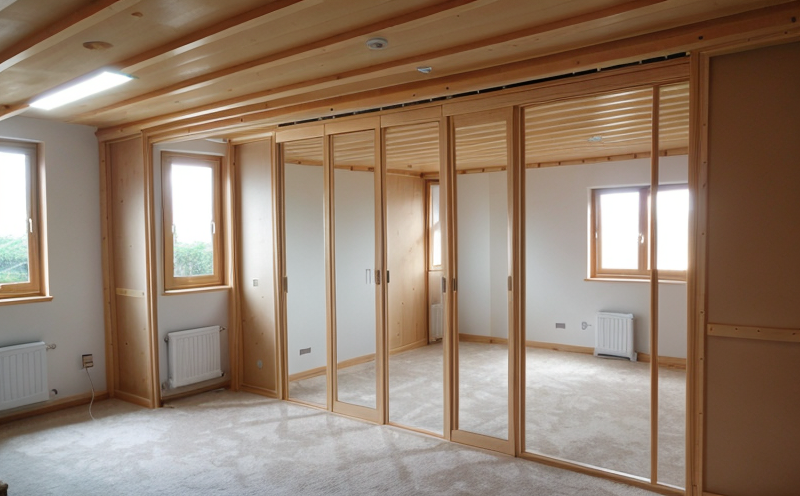Interior partition inspection
The inspection of interior partitions is a critical component in construction and building compliance. Interior partitions serve multiple purposes: they enhance privacy, provide structural integrity, and contribute to the overall aesthetic appeal of the space. Properly designed and constructed partitions are essential for ensuring that buildings meet safety standards and operational requirements.
Interior partitions can be made from various materials such as gypsum board, concrete blocks, brick masonry, wood, metal studs, or composite panels. The selection of material depends on factors like fire resistance, sound insulation, thermal performance, and structural stability. In this context, the inspection process focuses on verifying that these elements meet specified standards and are installed correctly.
The International Organization for Standardization (ISO) provides guidelines for partition construction in ISO 1065-2:2009, which outlines methods for determining the thermal insulation properties of building materials. Similarly, ASTM C1314-18 establishes performance requirements for sound-absorbing and fire-retardant acoustical plasterboard used as partitions.
During an interior partition inspection, the following aspects are typically evaluated:
- Material Compliance: Ensuring that the materials used in the partitions comply with relevant building codes and standards. This includes checking for correct thickness, type of insulation, and fire resistance ratings.
- Installation Quality: Verifying that the partitions are installed correctly according to design specifications. This involves assessing the alignment, stability, and secure attachment to walls or floors.
- Safety Standards: Confirming adherence to safety regulations concerning load-bearing capacity, fire resistance ratings, and sound insulation levels.
- Ergonomics and Aesthetics: Ensuring that the partitions enhance usability while maintaining aesthetic coherence with the overall interior design.
The inspection process often involves a combination of visual checks, measurements, and sometimes destructive testing. Non-destructive testing techniques like ultrasonic scanning or infrared thermography can also be employed to assess the structural integrity and thermal performance of partitions without causing damage.
By conducting thorough inspections, construction professionals ensure that interior partitions contribute effectively to creating safe, comfortable, and functional spaces within buildings. This not only enhances occupant satisfaction but also supports long-term building maintenance and operational efficiency.
Benefits
The benefits of a comprehensive interior partition inspection extend beyond mere compliance with regulations; they encompass enhanced safety, improved functionality, increased durability, and better energy efficiency. Here are some key advantages:
- Safety Enhancement: Ensures that partitions meet fire resistance standards, which can significantly reduce the risk of fires spreading within a building.
- Better Acoustics: Properly designed partitions with appropriate sound insulation properties help maintain privacy and promote a more comfortable working environment.
- Energy Efficiency: Insulated partitions contribute to better thermal performance, helping to regulate indoor temperatures and reduce energy consumption for heating and cooling.
- Aesthetic Consistency: Ensures that interior design elements are harmonized, creating visually appealing spaces that align with the overall architectural vision of the building.
- Durability: Quality inspections help identify potential issues early, extending the lifespan of partitions and reducing the need for costly repairs in the future.
- Regulatory Compliance: By adhering to local building codes and standards, interior partition inspection ensures that buildings meet legal requirements, thereby protecting against fines or delays.
- Better Occupant Satisfaction: Comfortable working environments lead to higher productivity levels and better overall well-being among occupants.
In summary, a robust inspection process for interior partitions contributes to the long-term success of any construction project by addressing both immediate safety concerns and future operational needs.
Customer Impact and Satisfaction
The impact of effective interior partition inspections on customers is profound. For building owners and managers, these inspections ensure that their properties meet all necessary regulatory requirements while delivering high-quality, functional spaces. This can lead to increased property value and improved tenant satisfaction.
For contractors and architects, the process fosters a culture of quality assurance, which enhances professional reputation and client trust. By adhering to strict inspection protocols, they demonstrate their commitment to excellence, thereby building lasting relationships with clients.
Occupants benefit directly from the enhanced safety features and improved acoustics provided by properly inspected partitions. They experience more comfortable environments that contribute positively to both physical health and mental well-being. Ultimately, these inspections play a crucial role in creating spaces where people feel safe, secure, and satisfied.
International Acceptance and Recognition
The inspection of interior partitions is widely recognized internationally for its importance in ensuring structural integrity, safety, and compliance with local regulations. Organizations such as the International Organization for Standardization (ISO), American Society for Testing and Materials (ASTM), European Committee for Standardization (CEN), and others have established comprehensive standards that guide this process.
For instance, ISO 1065-2:2009 focuses on thermal insulation properties of building materials, which is crucial for interior partitions. ASTM C1314-18 specifies the performance requirements for acoustical plasterboard used in partition construction. Similarly, EN 13501-1 sets out criteria for fire resistance in buildings.
Recognition from these international bodies underscores the significance of thorough inspections in maintaining high standards across different regions and countries. Compliance with such standards not only ensures local regulatory adherence but also facilitates easier cross-border transactions and collaborations.





